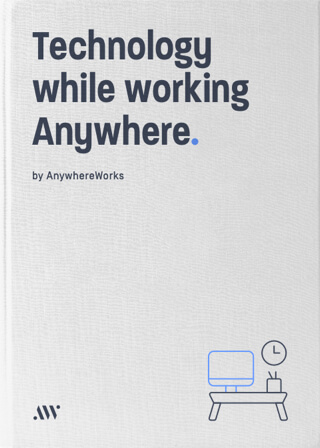Over two-thirds of employers say allowing their employees to work outside of the office resulted in increased productivity. But despite this, many people still worry about how to manage themselves and their time when working from home.
People tend to raise the same concerns when discussing working from home, and self-management is one of the most common.
Many workers still believe they would find it difficult to take on the responsibility of managing their time and keeping on top of their to-do list when working outside the office.
That’s why we put together this guide; to outline some ways to overcome these issues around self-management. The guide will also give you some simple, actionable tips to help you stay productive while working from home.

CREATE A TEAM TASK SCHEDULE
One of the easiest ways to manage your time and stay on top of tasks while working from home is to create a clear schedule and task list with your teammates.
There are a number of team collaboration and project management tools available to help you to prioritise your tasks, see what everyone is working on, and set deadlines. Many people worry about how their team members will work together. More significantly, many leaders worry their team will have less clarity of their responsibilities while working outside of the office. But these tools are a great way to avoid these issues and ensure everyone knows what is expected of them.
With clear priorities and working schedule, you can focus on work without worrying about a lack of clarity over project timelines.

LEARN TO SAY “NO”
In the office, people tend to be more aware of which projects you are already working on, as you are working together in the same space. If they can see you’re busy then they are unlikely to keep piling new requests on you.
However, when you work from home, your colleagues may not be aware of your workload. That can lead to different team members asking for input, even if you’re already overloaded. Outside of the office, it can be tempting to take on every task you are asked to do to ensure your teammates know you are working and aren’t forgetting about you.
Choose a team collaboration tool that allows you to share updates on your current workload. Your team can check on your current workload and consider your availability before asking for help. Of course, if you’re still inundated with requests for input, it is important to learn to say “no”.
Taking on too many tasks will lead to burnout and limit the quality of your work across projects.
Next time you’re asked to do something that isn’t feasible under your existing workload, politely decline and explain you don’t have the time required to provide the required input. Your co-workers can see you are indeed working hard. More importantly, you have the opportunity to add more value to the projects you’re already working on.

MAKE A PERSONAL DAILY PLAN
At the start of the day, some people find it difficult to motivate themselves when they are not in an office environment. You might overcome this issue by creating a separate workspace at home, going to a coffee shop, or working in a co-working space. But wherever you decide to base yourself, having a personal task list is a great way to start your day and stop you from spending too long staring at a blank screen wondering where to begin.
As mentioned previously, team task lists are essential when working outside the office, but having a more personalised daily plan for yourself can help you to break tasks down even further and see exactly what needs to be worked on.
When you don’t have your colleagues around you as a physical reminder of what needs to be done, creating a daily plan helps you to know exactly what to get stuck into as you begin your working day. This is a good process to follow regardless of where you work, but clearly outlining all of your tasks in this way can be especially useful for those working from home.

The easiest way to improve your team’s ability to collaborate when you’re working Anywhere is by using the right tools.



